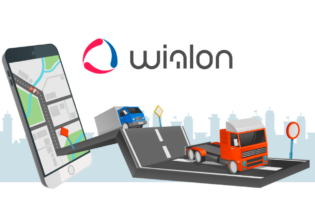By Jonathan Holden, Managing Executive: Insurance Innovation Group South Africa
Data generation is a daily occurrence, yet the inability to effectively collate and analyse data across multiple industries remains a challenge. Reasons include the inability to collect real-time raw data, system integration across multiple platforms and an inability to take all the data we have and to use it to make our roads safer. Collating data, applying data analytics and coupling mobile sensing technology can help improve driver behavior. Annually we see an increase in the number of road fatalities across our road networks and motor claim statistics indicate that as the number of accidents increases so too does the number of uninsured claims. Each year about 14 000 drivers, passengers and pedestrians die on South African roads – that’s the equivalent of a Boeing 747 full of passengers crashing every 10 days. Human error constitutes more than 80% of these collisions. Road safety is a critical public policy issue and the statistics are indicative of the need to start looking at not only data analytics but at the collation of data across multiple entities to drive change and improve road conditions. Law enforcement authorities rely on data to monitor the occurrence of infringements and to keep track of legal proceedings. Data also enables an intelligence-led approach to enforcement that assists in the identification of high-speed areas and outlining where incidences of drunk driving are on the increase. The transport sector aims to collect data indicating where road conditions need attention and improvement so as to promote safe road conditions for travelers. They are also responsible for monitoring roadworthiness, registration and examinations to establish driver ability on our roads. And they require data for the identification of hazardous locations, or hotspots, to identify high-risk routes and road design problems so that engineering standards are improved. Similarly, the healthcare sector relies on data to estimate the magnitude of both fatal and non-fatal road traffic injuries and to identify the risk factors involved to effectively cater for the fallout. And to give insight into trends of impact prevention programmes and to help the sector to plan effectively for trauma care and rehabilitation services.In the same way, data collected by insurance companies could be used not only to make drivers more aware of their driving habits, but also to analyse broader trends such as geographical and historical information that could inform things like better infrastructure, or finding better ways of communicating certain messages for certain things.
The tools exist in telematics and big data to do something about this unacceptable state of affairs, but it requires commitment and cooperation from multiple industries including insurers, traffic authorities and vehicle owners. If a national system could be put in place (and it can, given the necessary cooperation and funding) then it would dramatically reduce accident rates and also end the need for speed trapping as cars could be GPS-programmed to slavishly follow speed limits. Imagine the possibilities when multiple systems could be tapped in to in order to provide a data bank which could be accessed by transport, healthcare and private sectors and law enforcement authorities to provide roadmaps for the future. And in so doing to give our citizens better infrastructure, better care – and better offerings that make sense for their personal needs, and within the bigger picture. Insurance companies are leading the charge in many ways to pioneer innovation in areas like telematics which enable them to price policies more fairly based on individual driving behavior and profiles. It stands to reason then, that they too should pioneer systems that could enable innovative road safety in South Africa. The obstacle is achieving the necessary cooperation between all parties and the commitment to driving change and making our roads safer. Systems would need to be standardized across industries and significant investment would need to be made to upgrade traffic authority systems. Insurers would need to look at accommodating these types of changes in the pricing of their policies. Analytics and predictive technology would go a long way to assist all stakeholders not just in monitoring the traffic rerouting plans, but also in evaluating the efficiency and thresholds of the new projects after their completion. This would allow authorities to employ solutions long before a potential problem matures into a crisis.







